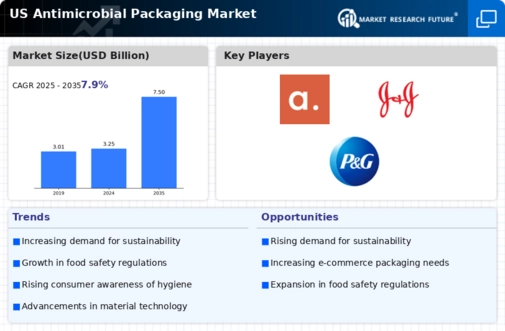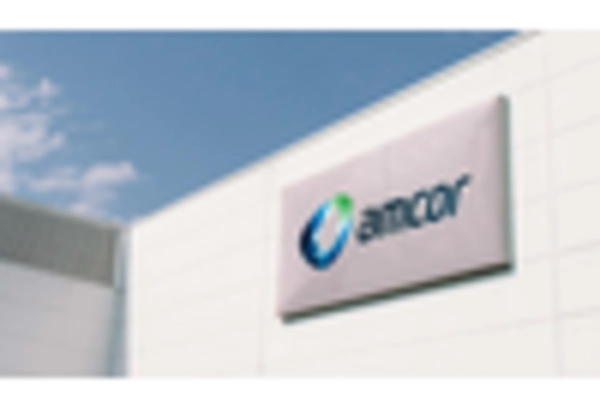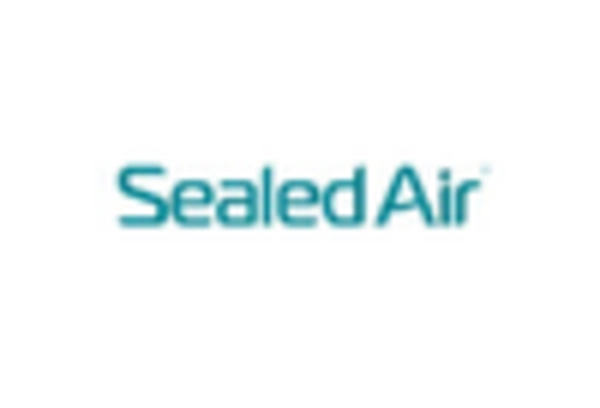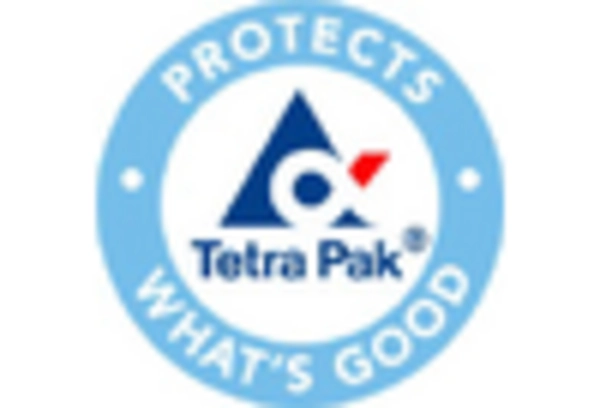Increasing Consumer Awareness
The antimicrobial packaging market is experiencing growth due to rising consumer awareness regarding food safety and hygiene. As consumers become more informed about the risks associated with foodborne illnesses, they increasingly seek products that offer enhanced protection. This trend is particularly evident in the food and beverage sector, where antimicrobial packaging can significantly reduce microbial contamination. According to recent data, the demand for antimicrobial packaging solutions in the food industry is projected to grow at a CAGR of approximately 7.5% over the next five years. This heightened awareness is driving manufacturers to innovate and adopt antimicrobial technologies, thereby expanding the market's potential.
Regulatory Support for Food Safety
Regulatory support for food safety is a driving force behind the antimicrobial packaging market. Government agencies are increasingly implementing stringent regulations to ensure food safety and quality, which in turn encourages the adoption of antimicrobial packaging solutions. The Food and Drug Administration (FDA) has established guidelines that promote the use of materials that can inhibit microbial growth in food packaging. This regulatory framework is expected to bolster the market, as manufacturers align their practices with safety standards. The antimicrobial packaging market is likely to benefit from these regulations, fostering innovation and compliance in the industry.
Rising Demand in Healthcare Sector
The healthcare sector's increasing demand for antimicrobial packaging is significantly influencing the antimicrobial packaging market. With the growing emphasis on infection control and patient safety, healthcare providers are seeking packaging solutions that minimize contamination risks. Antimicrobial packaging is utilized for medical devices, pharmaceuticals, and other healthcare products to ensure sterility and safety. The healthcare packaging market is projected to grow at a CAGR of around 8% through 2026, indicating a robust demand for antimicrobial solutions. This trend underscores the importance of antimicrobial packaging in maintaining product integrity and safety in the healthcare industry.
Innovation in Packaging Technologies
Innovation in packaging technologies is a critical driver for the antimicrobial packaging market. Advances in materials science have led to the development of new antimicrobial agents and packaging formats that enhance product shelf life and safety. For instance, the incorporation of nanotechnology in packaging materials has shown promising results in effectively combating microbial growth. The market for antimicrobial packaging is expected to reach approximately $5 billion by 2026, driven by these technological advancements. As companies strive to differentiate their products, the integration of innovative antimicrobial solutions is likely to become a standard practice in the industry.
Growth in E-commerce and Online Retail
The surge in e-commerce and online retail is a notable driver for the antimicrobial packaging market. As more consumers opt for online shopping, the need for packaging that ensures product safety during transit becomes paramount. Antimicrobial packaging helps in maintaining the integrity of products, particularly perishables, by inhibiting microbial growth. The e-commerce sector in the US has seen a remarkable increase, with sales reaching over $900 billion in 2025. This growth necessitates the adoption of advanced packaging solutions, thereby propelling the demand for antimicrobial packaging in the logistics and supply chain sectors.

















Leave a Comment